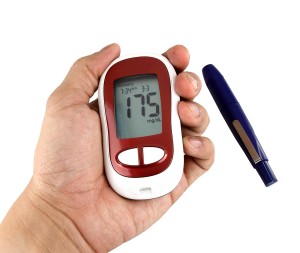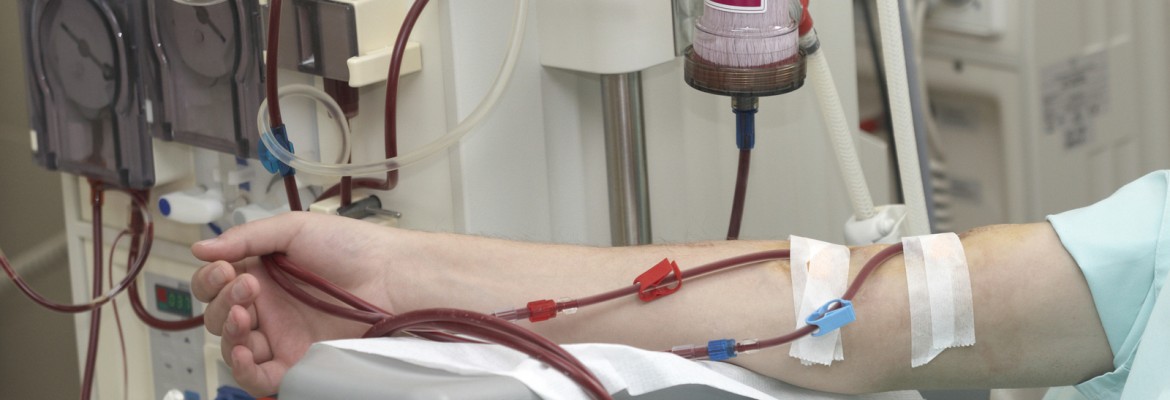NOVEL EDUCATIONAL METABOLIC RESTORATION TECHNOLOGY TO IMPROVE DIABETES TYPE 2 MANAGEMENT, OBESITY AND ACHIEVING REDUCTIONS IN PATIENT MEDICAL COSTS
INTRODUCTION
Diabetes is defined by several medical dictionaries as a “metabolic disease” implying that the body’s metabolism or its cellular energy producing capacity is somehow involved both in the management of diabetes. (1) Diabetes Type 2 (DT2) and its obesity component have continued to increase in its incidence in a worldwide epidemic trend. (2) According to the American Diabetes Association (ADA) approximately 85% of Type 2 diabetics are affected by obesity so these 2 conditions DT2 and obesity appear to be intimately related. (3) (4) (5)
An educational metabolic restorative approach named as the “Metabolic Restorative Technology Medical Protocol” (MRT-MD) has been put together and has shown some significant results in the measurable diabetic health parameters and obesity related anthropometric data of waist circumference (WC), body weight (BW) and Body Mass Index (BMI). Amongst the purposes of this novel medical protocol is to produce clinical results as reflected in the patients A1c (glycosylated hemoglobin) tests, their lipid profiles on Triglycerides (TG), High Density Lipoprotein (HDL), Low Density Lipoprotein (LDL) as well as any changes observable in their medication needs and any cost reductions obtainable through the method’s life style and alimentary education component.

METABOLIC CORRECTION & PATIENT EDUCATION
The clinical application precepts proposed by the MRT-MD protocol are in alignment with the concept of “metabolic correction” and the possibility of achieving medical cost reduction in the management of DT2 by alimentary and lifestyle modifications. (6) (7) One novel approach of the MRT-MD protocol is its attempt to educate the DT2 patient in an effort to recruit the patient’s compliance by enhancing its understanding of the alimentary choices and lifestyle decisions and their possible effects on their DT2 condition. One basic hypothesis of the MRT-MD protocol method is that most non-compliance and a fair amount of the desertion rate are mostly caused by the poor personal results that would be considered valuable to the patient (weight loss, energy and/or sleep quality improvement) from the DT2 patient’s perspective. Thus, attaining weight loss when desired, metabolic energy improvements and a bettered sleep quality, as perceived by the patients themselves, and as reflected in their WC, BW and BMI is vital to this method to guarantee continued patient compliance and participation. (8) (9) (10)
 The MRT-MD protocol delivers a onetime 50 minute audio-visual graphic assisted patient education course on alimentary choices, life style and diabetic management basics at the start of each patient’s participation. The driving hypothesis behind the MRT-MD protocol assumes that the patient’s non-compliance and desertion ratio is further aggravated by its negligible understanding of the hormonal and autonomic nervous system (ANS) disruptions caused by hyperglycemia as a result of its poor alimentary choices and life style. To educate the DT2 patients the MRT-MD protocol uses a proprietary educational technology that optimizes the participants understanding and has been found to substantially increase patient compliance. Initially patients are seen every 2 weeks for the first 13 weeks, blood test for A1c, lipids, urine, renal and thyroid function are redone on each participant every 13 weeks. Those DT2 patients that have shown significant improvement in their anthropometric data of WC, BW, BMI and reductions in their medication dosage necessities are asked to continue the study to complete the 52 week study period but will then be monitored only every 4 weeks.
The MRT-MD protocol delivers a onetime 50 minute audio-visual graphic assisted patient education course on alimentary choices, life style and diabetic management basics at the start of each patient’s participation. The driving hypothesis behind the MRT-MD protocol assumes that the patient’s non-compliance and desertion ratio is further aggravated by its negligible understanding of the hormonal and autonomic nervous system (ANS) disruptions caused by hyperglycemia as a result of its poor alimentary choices and life style. To educate the DT2 patients the MRT-MD protocol uses a proprietary educational technology that optimizes the participants understanding and has been found to substantially increase patient compliance. Initially patients are seen every 2 weeks for the first 13 weeks, blood test for A1c, lipids, urine, renal and thyroid function are redone on each participant every 13 weeks. Those DT2 patients that have shown significant improvement in their anthropometric data of WC, BW, BMI and reductions in their medication dosage necessities are asked to continue the study to complete the 52 week study period but will then be monitored only every 4 weeks.
IMPORTANCE OF PROPER HYDRATION
The MRT-MD protocol sets specific individual daily hydration quotas to each DT2 patient in terms of glasses of water (237 ml each) based on a water consumption formula that uses the patient’s BW as the determining factor. This is an important life style modification as it reduces the insulin resistance (IR) characteristic to DT2 patients. (11) (12)(13)(14)
HORMONAL INFLUENCE OF DIET CHOICES ON DIABETIC HYPERGLYCEMIA
Calorie counting is not part of the MRT-MD protocol and patients are free to select their foods choices after having learned to differentiate between those foods that have a high glycemic load (HGL) and those that are of a low glycemic load (LGL). The MRT-MD diet is not a low carbohydrate diet but more of a controlled HGL diet which seeks to lower both hyperglycemic and hyperinsulinemic instances. On the first 13 weeks of treatment the patients are asked to monitor their pospandrial glucose with their glucometers regularly to gain experience from their own food choices and its effects on their pospandrial glycaemia values. They are instructed with simple audio-visual graphics to achieve a balance of protein, carbohydrate and fats at each of its 3 main meals with an emphasis in not exciding a certain portion of their food plate with a certain amount of HGL carbohydrates. (15) (16) (17) (18) (19) (20) (21) (22) (23) (24) (25)
AUTONOMIC NERVOUS SYSTEM INVOLVEMENT
Another peculiarity of the MRT-MD protocol is its pre-classification of each DT2 patient as either sympathetic dominant (SD) or para-sympathetic dominant (PD) with the use of a proprietary questionnaire developed for the application of its metabolic restorative technology. This classification is used to determine the food groups that are best suited to the individual DT2 patients ANS dominance (SD vs PD) to accommodate for each participant’s genetic predisposition. The concept of biochemical individuality with its inherent ANS and hormonal response to foods ingested has already been established and has shown to be useful to the MRT-MD protocol. (26) (27) (28) DT2 patients are asked to select foods that favor their own body’s SD or PD predominance in order to better potentiate de metabolism to achieve the individual patient’s weight loss, body energy or sleep quality improvement personal goal. (29)
MAGNESIUM SUPPLEMENTATION
Early on the development phase of the MRT-MD protocol it was found that magnesium played a key role in lowering the insulin resistance that is characteristic of DT2. Previous research also confirmed that magnesium deficiencies strongly influenced the dysregulation of cellular insulin receptors and thus played an important role in controlling both diabetes and obesity with added benefits in lowering hypertension. (30) (31)(32) (33)(34) Thus, since the start of the study all DT2 patients are asked to supplement daily with magnesium on a “bowel tolerance” individual dosage basis. Magnesium supplementation also helps with the DT2 patients sleep quality which in turn helps with the weight loss efforts that ultimately could help achieve a reduction in medication dosaging needs (insulin, diabetic oral agents and antihypertensive drugs) and its associated medical management costs. (35) (36) (37) (38) (39) (40) (41) (42) (43) (44) (45)
A WATCHFULL EYE ON POTENTIAL MEDICATION COSTS AND COMPLICATIONS REDUCTIONS
A large share of the medical expenses associated with diabetic management and obesity related conditions is in the cost of prescription medications. An even larger share is consumed by complications that require hospitalizations or dialysis. (46) (47) It has been noticed in using the MRT-MD protocol that reducing hyperglycemia can result in substantial reduction in both of these kinds of medical costs. (48) The MRT-MD protol proposes that achieving significant medication and medical complications cost reductions could provide an important incentive and free up funds to invest in better educational and preventive measures. For this reason DT2 patients who lose weight, better their anthropometric data on WC, BW, BMI or are able to reduce their medication needs (insulin or others) are enthusiastically acknowledged by their medical practitioner.
ORIGINS IN ACHIEVING MEASURABLE RESULTS
 The MRT-MD protocol did not develop overnight. It is the offshoot development from a successful weight loss practice with thousands of paying customers, who demanded the weight loss results they had paid for, many of which had diagnosed DT2. Through 15 plus years of a non-patient weight-loss practice based on the concept of metabolic restoration this weight-loss practice developed an educational program that strived to instil a permanent life style in its clients. Through lots of trial and error several strategies were tested and it was found that education was the key element to achieve both compliance and desirable results. To assist in educating about its weight-loss metabolic restorative technology to their clients an extensive set of graphic audio-visual tools were developed. The purpose was to educate the persons wanting to lose weight to select their foods properly in accordance with their weight loss or diabetic control goals and their own body’s specific ANS inclination. It was observed that prescription medications for diabetes (most specially injected insulin) would reduce the body’s ability to shed fatty deposits and thus efforts were made to find ways of reducing the need for medication through a low glycemic load diet, proper hydration and magnesium supplementation. The stress of the MRT-MD precursor weight loss program was always on results and the same holds true for the current medical protocol that evolved to become the MRT-MD protocol which is wholly results oriented.
The MRT-MD protocol did not develop overnight. It is the offshoot development from a successful weight loss practice with thousands of paying customers, who demanded the weight loss results they had paid for, many of which had diagnosed DT2. Through 15 plus years of a non-patient weight-loss practice based on the concept of metabolic restoration this weight-loss practice developed an educational program that strived to instil a permanent life style in its clients. Through lots of trial and error several strategies were tested and it was found that education was the key element to achieve both compliance and desirable results. To assist in educating about its weight-loss metabolic restorative technology to their clients an extensive set of graphic audio-visual tools were developed. The purpose was to educate the persons wanting to lose weight to select their foods properly in accordance with their weight loss or diabetic control goals and their own body’s specific ANS inclination. It was observed that prescription medications for diabetes (most specially injected insulin) would reduce the body’s ability to shed fatty deposits and thus efforts were made to find ways of reducing the need for medication through a low glycemic load diet, proper hydration and magnesium supplementation. The stress of the MRT-MD precursor weight loss program was always on results and the same holds true for the current medical protocol that evolved to become the MRT-MD protocol which is wholly results oriented.
FOR INFORMATION ON OUR MEDICAL PERSONNEL TRAINING COURSES AND/OR TECHNICAL CONSULTATION SERVICES ON COST REDUCTIONS CALL OR WRITE TO OUR MEDICAL DIRECTOR, CARLOS CIDRE M.D.
Contact us at
Carlos Cidre, M.D. Internal Medicine, Board Certified
Medical Director – MRT-MD protocol
Telephone 787-763-2527, ext # 9,
Fax 787-772-9208
Email: drcarloscidre@diabetessinproblemas.com
References
1. Stedman’s Medical Dictionary. Stedman’s Medical Dictionary. 2005.
2. Prevalence of Overweight and Obesity Among Adults with Diagnosed Diabetes – United States, 1988–1994 and 1999–2002. Centers for Disease Control and Prevention. 28, 2013, Morbidity and Mortality Weekly Report (MMWR), Vol. 62.
3. The Epidemic of Obesity. Stein CJ, Colditz GA. 2004, J Clin Endocrinol Metab, pp. 89:2522-2525.
4. U.S. DEPARTMENT OF HEALTH AND HUMAN SERVICES. National Institute of Diabetes and Digestive and Kidney Diseases (NIDDK), National Institutes of Health (NIH). National Diabetes Information Clearinghouse (NDIC). [Online] June 2012. [Cited: Sept 19, 2013.] http://diabetes.niddk.nih.gov/dm/pubs/sup/.
5. Nat. Diabetes Stat. National Diabetes Statistics, 2011. [Online] 2011. [Cited: Sept 15, 2013.] http://diabetes.niddk.nih.gov/dm/pubs/statistics.
6. Metabolic correction in the management of diabetic peripheral neuropathy: improving clinical results beyond symptom control. Miranda-Massari JR, Gonzalez MJ, Jimenez FJ, Allende-Vigo MZ, Duconge J. 4, Nov 2011, Curr Clin Pharmacol. , Vol. 6, pp. 260-73.
7. Metabolic Correction: A Functional Explanation of Orthomolecular Medicine. Gonzalez MJ, Miranda Massari JR. 1, s.l. : University of Puerto Rico, Medical Sciences Campus, 2012, Journal of Orthomolecular Medicine, Vol. 27.
8. Association of Sleep Time With Diabetes Mellitus and Impaired Glucose Tolerance. Gottlieb DJ, et al. 8, 2005, Arch Intern Med. , Vol. 165, pp. 863-867.
9. Am. Heart Assoc. ‘Short-sleepers’ May Develop Blood Sugar Abnormality That Can Lead To Diabetes. www.sciencedaily.com. [Online] 2009. [Cited: March 10, 2014.] http://www.sciencedaily.com/releases/2009/03/090311162803.htm.
10. Sleep and Glucose Intolerance/Diabetes Mellitus. Ip M, MDa, Mokhlesi B. 1, 2007, Sleep Med Clin., Vol. 2, pp. 19–29.
11. Cell hydration and mTOR-dependent signalling. Schliess F, et al. 1-2, My-June 2006, Acta Physiol (Oxf)., Vol. 187, pp. 223-9.
12. Cell hydration and insulin signalling. Schliess F. et al. 5-6, 2000, Cell Physiol Biochem, Vol. 10, pp. 403-8.
13. Wiggins, Philippa M. Biophysics Of Water. [ed.] Felix Franks and Shiela E Mathis. s.l. : John Wiley and Sons Ltd., 1982, pp. 266-269.
14. Dehydration-induced renin secretion: involvement of histaminergic neurons. Kjaer A. et al. 5, May 1998, Neuroendocrinology, Vol. 67, pp. 325-9.
15. Weight Loss with a Low-Carbohydrate, Mediterranean, or Low-Fat Diet. Shai I, et al. 2008, N Engl J Med , Vol. 359, pp. 229-241.
16. Lasting improvements of hyperglycemia and bodyweight: low-carbohydrate diet in type 2 diabetes. . Nielsen JV, Jonsson E, Nilsson AK. 2005, Ups J Med Sci, pp. 110(2):179-83.
17. Assessing Glycemic Control With Self-monitoring of Blood Glucose and Hemoglobin A1c Measurements. Dailey G. 2, Feb 2007, Mayo Clinic Proceedings, Vol. 82, pp. 229-236.
18. Dietary glycemic load assessed by food-frequency questionnaire in relation to plasma high-density-lipoprotein cholesterol and fasting plasma triacylglycerols in postmenopausal women. Liu S, et al. 3, Mar 2001, Am J Clin Nutr., Vol. 73, pp. 560-6.
19. Chronic hyperglycemia impairs endothelial function and insulin sensitivity via different mechanisms in insulin-dependent diabetes mellitus. Mäkimattila S, Virkamäki A, Groop PH, Cockcroft J, Utriainen T, Fagerudd J, Yki-Järvinen H. 6, Sep 15, 1996, Circulation. , Vol. 94, pp. 1276-82.
20. Dietary carbohydrate restriction restriction in type 2 diabetes mellitus and metabolic syndrome: time for a critical appraisal. . Accurso A, Bernstein RK, Dahlqvist A, Draznin B, Feinman RD, Fine EJ, Gleed A, Jacobs DB, Larson G, Lustig RH, Manninen AH, McFarlane SI, Morrison K, Nielsen JV, Ravnskov U, Roth KS, Silvestre R, Sowers JR, Sundberg R, Volek JS, Westman EC, Wood RJ, Wortm. 2008, Nutr Metab (Lond), p. 5:9.
21. Five-week, low-glycemic index diet decreases total fat mass and improves plasma lipid profile in moderately overweight nondiabetic men. Bouché C, et al. 5, May 2002, Diabetes Care., Vol. 25, pp. 822-8.
22. Low glycaemic index diets and blood lipids: a systematic review and meta-analysis of randomised controlled trials. Goff LM, et al. 1, Jan 2013, Nutr Metab Cardiovasc Dis. , Vol. 23, pp. 1-10.
23. Low-Carbohydrate Diet Review: Shifting the Paradigm. Hite AH, et al. 3, s.l. : American Society for Parenteral and Enteral Nutrition, June 2011, Nutrition in Clinical Practice, Vol. 26, pp. 300-308.
24. The National Cholesterol Education Program Diet vs a Diet Lower in Carbohydrates and Higher in Protein and Monounsaturated Fat. Aude YW, et al. 19, October 25, 2004, JAMA Internal Medicine, Vol. 164, pp. 2141-2146.
25. The role of magnesium in hypertension and cardiovascular disease. Houston M. 11, Nov 2011, J Clin Hypertens (Greenwich). , Vol. 13, pp. 843-7.
26. Biochemical Individuality and Its Implications. RJ, Williams. 1947, Chem Eng News, Vol. 25, pp. 1112-3.
27. Stress, acute hyperglycemia, and hyperlipidemia role of the autonomic nervous system and cytokines. Nonogaki K, Iguchi A. 5, Jul 1997, Trends Endocrinol Metab., Vol. 8, pp. 192-7.
28. Sympathetic nervous system-dependent vasoconstriction in humans. Evidence for mechanistic role of endogenous purine compounds. Taddei S, Pedrinelli R, Salvetti A. s.l. : Clinica Medica,University of Pisa, Italy , 1990 Dec, Circulation, pp. 82(6):2061-7.
29. Adverse metabolic consequences in humans of prolonged sleep restriction combined with circadian disruption. Buxton OM, et al. 129, Apr 11, 2012, Sci Transl Med. , Vol. 4, pp. 129-43.
30. Dysregulation of insulin receptor substrate 2 in β cells and brain causes obesity and diabetes. Xueying L. et al. 7, s.l. : Howard Hughes Medical Institute Children’s Hospital, Division of Endocrinology, Harvard Medical School, Boston, Massachusetts, USA, Oct 2004, J Clin Invest., Vol. 114, pp. 908-16.
31. Associations of serum and dietary magnesium with cardiovascular disease, hypertension, diabetes, insulin, and carotid arterial wall thickness: the ARIC study. Atherosclerosis Risk in Communities Study. Ma J, Folsom AR, Melnick SL, Eckfeldt JH, Sharrett AR, Nabulsi AA, Hutchinson RG, Metcalf PA. 7, Jul 1995, J Clin Epidemiol. , Vol. 48, pp. 927-40.
32. Insulin-mediated glucose disposal is decreased in normal subjects with relatively low plasma magnesium concentrations. Rosolová H, Mayer O Jr, Reaven GM. 3, 2000, Metabolism. , Vol. 49, pp. 418-20.
33. Hypertension and peripheral insulin resistance. Possible mediating role of intracellular free magnesium. Resnick LM, Gupta RK, Gruenspan H, Alderman MH, Laragh JH. 5 Pt 1, May 1990, Am J Hypertens. , Vol. 3, pp. 373-9.
34. Clinical efficacy of magnesium supplementation in patients with type 2 diabetes. Yokota K, Kato M, Lister F, Ii H, Hayakawa T, Kikuta T, Kageyama S, Tajima N. 5, Oct 2004, J Am Coll Nutr., Vol. 23, pp. 506S-509S.
35. Magnesium basics. Jahnen-Dechent W., Ketteler M. s.l. : Oxford University Press, 2012, CKJ Oxford Journal.
36. Magnesium Metabolism and its Disorders. Swaminathan R. 2, s.l. : The Australian Association of Clinical Biochemists, May 2003, Clin Biochem Rev., Vol. 24, pp. 47-66.
37. The effect of magnesium supplementation on primary insomnia in elderly: A double-blind placebo-controlled clinical trial. Abbasi B, Kimiagar M, Sadeghniiat K, Shirazi MM, Hedayati M, Rashidkhani B. 12, Dec 2012, J Res Med Sci., Vol. 17, pp. 1161-9.
38. Slow-wave sleep and the risk of type 2 diabetes in humans. Tasali E, et al. 3, Nov 9, 2007, Vol. 105, pp. 1044–1049.
39. Sleep loss: a novel risk factor for insulin resistance and Type 2 diabetes. Spiegel K, et al. 5, Nov 1, 2005, Journal of Applied Physiology , Vol. 99, pp. 2008-2019.
40. Cross-Sectional Associations Between Measures of Sleep and Markers of Glucose Metabolism Among Subjects With and Without Diabetes. Knutson KL, et al. 5, May 2011, Diabetes Care , Vol. 34, pp. 1171-1176.
41. Implications of magnesium deficiency in type 2 diabetes: a review. Chaudhary DP, Sharma R, Bansal DD. May 2010, Biol Trace Elem Res., Vol. 134(2), pp. 119-29.
42. Magnesium deficiency produces insulin resistance and increased thromboxane synthesis. Nadler JL, Buchanan T, Natarajan R, Antonipillai I, Bergman R, Rude R. 6 Pt 2, Jun 1993, Hypertension., Vol. 21, pp. 1024-9.
43. Magnesium metabolism in type 2 diabetes mellitus, metabolic syndrome and insulin resistance. Barbagallo M, Dominguez LJ. 1, Feb 1, 2007, Arch Biochem Biophys., Vol. 458, pp. 40-7.
44. Role of magnesium in insulin action, diabetes and cardio-metabolic syndrome X. Barbagallo M, Dominguez LJ, Galioto A, Ferlisi A, Cani C, Malfa L, Pineo A, Busardo’ A, Paolisso G. 1-3, Feb-Jun 2003, Mol Aspects Med., Vol. 24, pp. 39-52.
45. Oral Magnesium Supplementation Improves Insulin Sensitivity and Metabolic Control in Type 2 Diabetic Subjects. Rodríguez-Morán M, et al. 4, April 2003, Diabetes Care , Vol. 26, pp. 1147-1152.
46. Economic Costs of Diabetes in the U.S. in 2012. ADA Diabetes Costs . 4, April 2013, Diabetes Care, Vol. 36, pp. 1033-1046.
47. Incidence of End-Stage Renal Disease Among Persons With Diabetes — United States, 1990–2002. CDC Report. 43, s.l. : United States Renal Data System (USRDS), 2005, Center for Disease Control report, Vol. 54 , pp. 1097-1100.
48. Association of glycaemia with macrovascular and microvascular complications of type 2 diabetes (UKPDS 35): prospective observational study. Stratton IM, et al. 2000, BMJ , Vol. 321.





